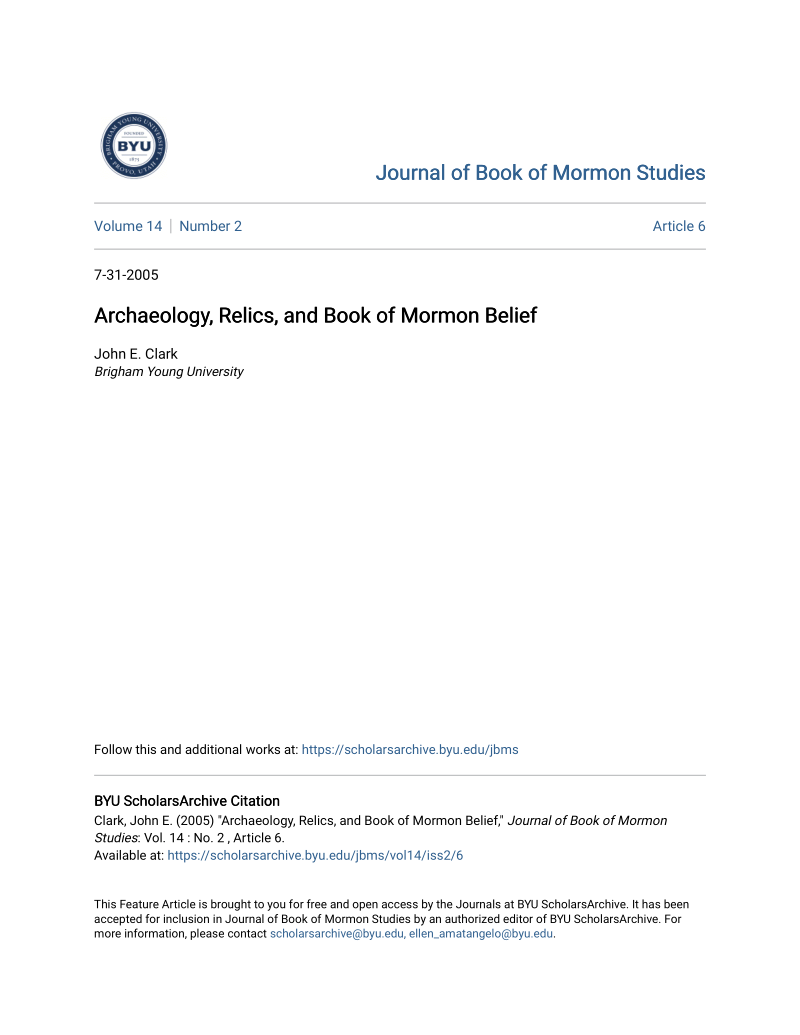JEC gives an overview of the growth in the BOM's historical accuracy since its initial publication.
- Type
- Academic / Technical Report
- Source
- John E. Clark LDS
- Hearsay
- Secondary
- Reference
John E. Clark, "Archaeology, Relics, and Book of Mormon Belief," Journal of Book of Mormon Studies 14, no. 2 (2005): 38-49, 71-74
- Scribe/Publisher
- Journal of Book of Mormon Studies
- People
- John E. Clark
- Audience
- General Public
- Transcription
Abstract
Archaeology has much to offer as a scientific means of gathering independent evidence of the Book of Mormon’s authenticity. But one must look in the right place. A cautionary tale is the failed Cluff expedition of 1900, which, assuming a “hemispheric model” of Book of Mormon geography, traveled from Provo as far as Colombia looking for the city Zarahemla. Yet in 1842 the Times and Seasons (under Joseph Smith’s editorship) had printed excerpts from a popular book on Mesoamerican archaeology that demonstrated a surprisingly high level of civilization, implying that Nephite lands did not extend into South America, thus supporting the theory of a “limited” geographic model. Both sides believe that archaeology is on their side. Book of Mormon critics also claim that archaeology is on their side, but decades of archaeological investigation in Mesoamerica and in the Old World has shown a pattern of increasing convergence that favors Book of Mormon authenticity. Evidences discussed include, among others, metal records in stone boxes, ancient writing, warfare, the tree of life and other metaphors, Old and New World geography, and cycles of civilization. In a sidebar article, the findings of an amateur archaeologist challenge a popular assumption that the hill was the scene of the final battles depicted in the Book of Mormon.
- Citations in Mormonr Qnas
The B. H. Roberts Foundation is not owned by, operated by, or affiliated with the Church of Jesus Christ of Latter-day Saints.

